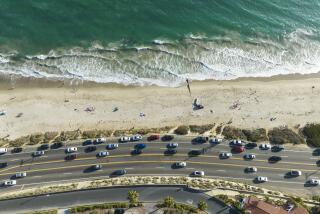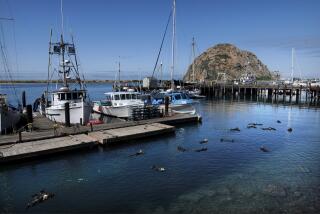Oil From 100-Gallon Slick Washes Up at Bolsa Chica
- Share via
HUNTINGTON BEACH — A horseshoe-shaped, 100-gallon oil slick from an undetermined source began washing up at the north end of Bolsa Chica State Beach on Thursday night, officials reported.
“We haven’t the slightest idea where it’s coming from right now,” said Huntington Beach Fire Capt. Rod Rieger as he stood on the surf line near Pacific Coast Highway and Warner Avenue and watched some of the oil wash ashore late Thursday night.
The spill area was opposite two offshore oil drilling platforms, but city officials said they had no indication that the petroleum came from either platform.
The slick initially raised fears of the catastrophe last February--the nearly 400,000-gallon American Trader oil spill. That spill required millions of dollars of cleanup efforts and closed beaches for weeks. Litigation over the spill is still in progress.
After inspecting the latest oil slick about 9 p.m., Huntington Beach Fire Department oil field inspector Mark Bodenbender declared it “a minor spill” and estimated that only 100 gallons of crude oil were involved. He said a commercial cleanup crew had been summoned to the scene, and he estimated that the oil could be removed with about 12 hours of work at a cost between $15,000 and $30,000.
Bodenbender said the source of the spill appeared to be out in the ocean somewhere to the north, in an area off Seal Beach, but he reiterated that the origin had not been definitely determined.
Thursday night’s spill appeared to be about 300 yards wide and was horseshoe-shaped, according to Fire Department Engineer Randy Goodman.
Goodman said the curve of the horseshoe was the part of the oil slick immediately washing ashore, with two prongs extending out to sea about 200 yards.
A brown, frothy sheen could be seen on some parts of the beach, but in the dark the extent of oil coverage was difficult to determine.
The slick was about 3 miles south of the opening to Anaheim Bay, which allows access to the Bolsa Chica Ecological Preserve, the largest and most important freshwater nesting habitat in Southern California.
More to Read
Sign up for Essential California
The most important California stories and recommendations in your inbox every morning.
You may occasionally receive promotional content from the Los Angeles Times.














